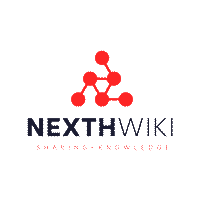Octalysis Framework
The Octalysis Framework: A Blueprint for Contentification
Developed by Yu-kai Chou, the Octalysis Framework identifies eight core drives that influence human behavior. These drives provide a roadmap for creating content that engages and motivates users:
- Epic Meaning & Calling: Content that taps into the audience's desire to be part of something greater. Brands can create narratives that align with their vision and purpose, inspiring users to join their journey.
- Development & Accomplishment: Content that offers opportunities for personal growth and achievement. Educational content, challenges, and tutorials can empower users to improve their skills and reach their goals.
- Empowerment of Creativity & Feedback: Interactive content that encourages user creativity and provides feedback. Contests, user-generated content campaigns, and interactive tools allow users to express themselves and feel valued.
- Ownership & Possession: Content that fosters a sense of ownership. Personalized experiences, exclusive content, and member-only benefits can enhance the user's connection to the brand.
- Social Influence & Relatedness: Content that builds social connections. Testimonials, community stories, and social proof can create a sense of belonging and influence user behavior.
- Scarcity & Impatience: Content that leverages scarcity and urgency. Limited-time offers, exclusive releases, and countdowns can drive immediate action and engagement.
- Unpredictability & Curiosity: Content that piques curiosity and keeps users coming back. Cliffhangers, teasers, and mystery elements can maintain interest and anticipation.
- Loss & Avoidance: Content that motivates users to avoid loss. Reminders, notifications, and fear of missing out (FOMO) tactics can encourage ongoing engagement.
The Octalysis Framework
The Octalysis Framework is a comprehensive gamification model developed by Yu-kai Chou. It analyzes human motivation through eight core drives that influence behavior and engagement. These core drives are:
Epic Meaning & Calling
The motivation derived from pursuing a greater purpose or goal beyond oneself. It taps into people's desire to be part of something bigger and aligns with their values and identity.[1]
Development & Accomplishment
The drive to make progress, achieve mastery, and accomplish goals. It leverages people's innate desire for growth and a sense of achievement.[2]
Empowerment of Creativity & Feedback
The motivation to express creativity and receive feedback. It allows users to be creative and get recognition from others.[3]
Ownership & Possession
The motivational pull of having control, ownership, and the ability to possess something. It satisfies people's desire for ownership and customization.[4]
Social Influence & Relatedness
The drive to connect with others, be part of a community, and gain social acceptance. It taps into people's need for social interactions and relationships.[5]
Unpredictability & Curiosity
The motivation to explore the unknown, experience surprises, and satisfy curiosity. It leverages people's innate desire for novelty and discovery.[6]
Scarcity & Impatience
The drive to acquire something scarce or limited before it's gone. It creates a sense of urgency and desire for immediate gratification.[7]
Loss & Avoidance
The motivation to avoid losing something one already possesses. It plays on people's aversion to loss and desire for security.[8]
The Octalysis Framework provides a structured approach to designing engaging experiences by incorporating these core drives into products, services, or systems. By understanding and leveraging the appropriate motivational drivers, designers can create experiences that captivate users and drive desired behaviors.[9]
The framework also considers different phases of the user journey, such as Discovery, Onboarding, Scaffolding, and Endgame, allowing for tailored experiences at each stage.[10] Additionally, it accounts for different player types and their motivations, ensuring a well-rounded experience for diverse audiences.[11]
